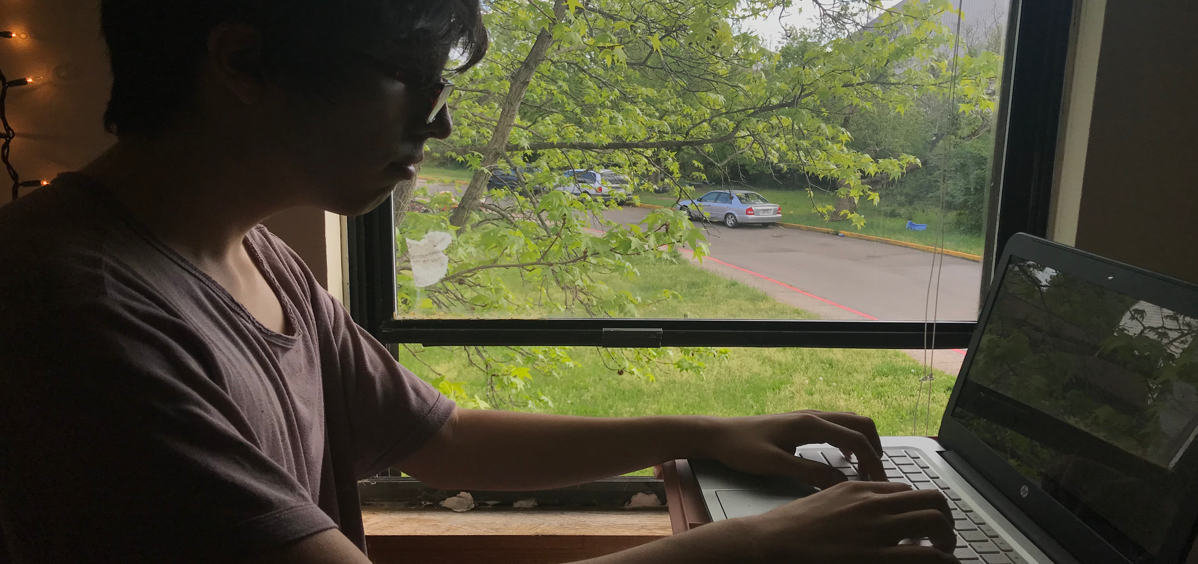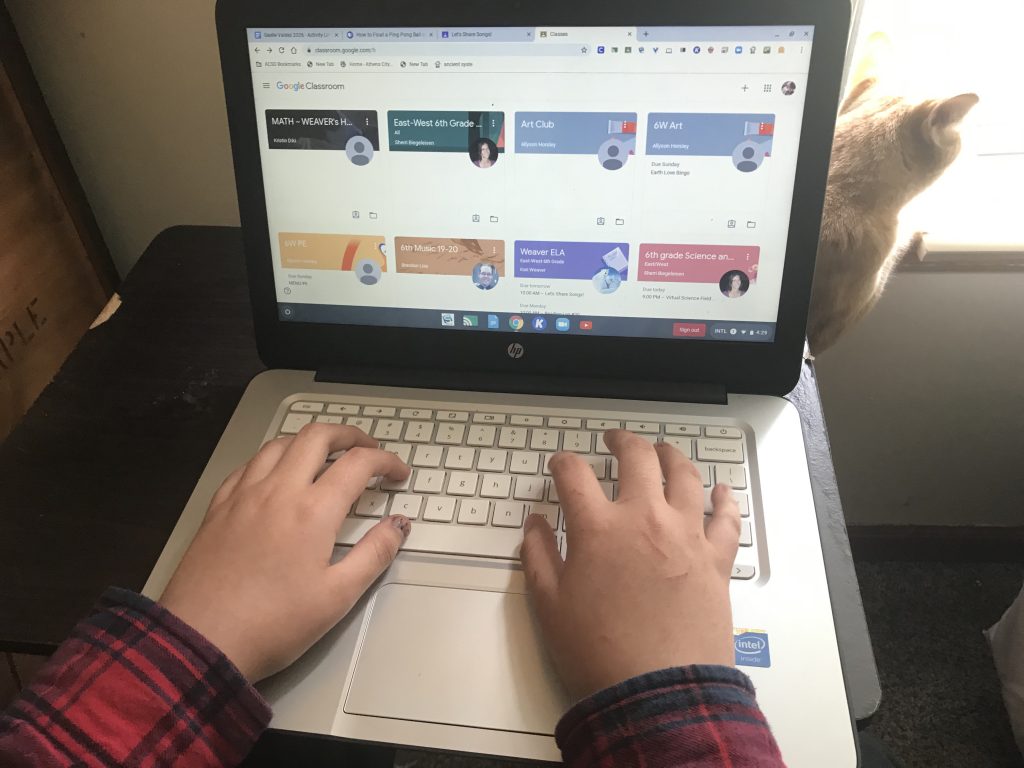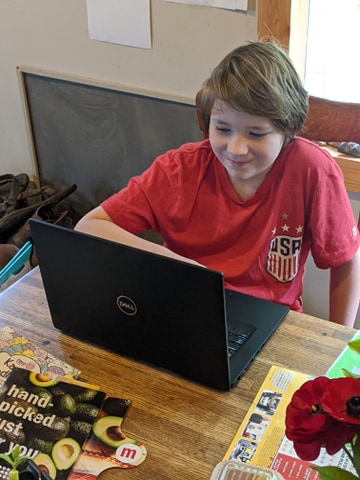News

How Athens Schools Bridged The Internet Gap During the Pandemic
By: Claudia Cisneros
Posted on:
ATHENS, Ohio (WOUB) — It was Tuesday, March 10, the day before Ohio had its first 3 COVID-19 cases reported and the state of emergency declared. Students were supposed to return to school from spring break the following Monday, March 16.
But Tom Gibbs, superintendent for the Athens City Schools District (ACSD), knew that schools in Athens couldn’t wait for a state closure. Instead, Gibbs called for the shutdown of all K-12 in the district beginning the day they were supposed to return to the classroom.
“We were in a unique position when this all started because we were already on spring break and I had made the decision, before the state, to go ahead and close so that students not return.”
His main concern and drive for the decision was the traveling associated with the community and the university. And even when he could have opened it just for kids to pick up materials and laptops, he decided not to in the interest of public health.
But this is when the real challenge started. If school was to resume remotely he would have to address the historical internet broadband gap in Southeast Ohio. Athens is one of the counties where 19.6% of households still do not have broadband internet service, according to the U.S. Census. Gibbs had find a way to provide all students with the same opportunity to do schoolwork and classes from home. He needed to find out how many students did not have internet or a computer.
A key investment pays off

For the families that did not respond, they called them on the phone and even knocked at some household doors to make sure everyone was accounted for.
They found out that 1,900 students, out of 2,600 needed a laptop.
Having more than half the district in without a computer would have been disheartening if the ACSD hadn’t been growing its digital infrastructure since 2013. They were prepared. The district actually had been buying tablets and devices for the past 7 years in an effort to move every student to a wireless platform.
Now, they just had to distribute them. And they did using the school buses. But what turned out to be most challenging, was supplying internet for 10% of their student population. More than 350 students in 270 households were in the digital gap, meaning they either had no internet or what they did have wasn’t good enough for school purposes. Then came the hotspots.
Ending internet isolation

“It’s like a cellphone except there is no phone capability or no speaker or screen. It’ll connect to the internet signal. You turn it on, you go to your Chromebook or your laptop and you look for the wireless network,” which the ACSD tech team has renamed Bulldogs.
In total, 270 devices of these hotspots were distributed in Athens county. For the first time many families were going to have access to the internet in their home.
The devices were free of cost but tied to a one-year internet service plan. According to Gibbs, the total investment was close to 80 thousand dollars. “We were able to free up money in the budget because we had a lot of teachers who were going to be going to professional development training over the Spring and Summer; and a lot of that got cancelled and we had more supplies that were more typical supplies that you’ll use in a face to face setting that we did not need to purchase.”
Only 17 households were inaccessible for the internet signal. Their teachers are providing printed assignments while the internet company tries to address the connections.
Bridging the Gap
As schools all over the country scrambled through the pandemic to overcome the hurdles of turning to remote learning, Gibbs saw this as an opportunity to grow the digital capabilities and equality of the students in Athens.
“I just decided to take the jump, so to speak, and go for the yearlong plan so then next year when we start back to school, we’ll have teachers and student who are used to using the devices. Students will have the hotspot that they needed and we can make that next step on our digital development, creating more blended learning opportunities for students.”
The devices comply with all the federal filters for school use but Gibbs wanted them to be accessible to family members as well.
“It’s getting them access to information. It’s giving them the ability to, maybe they needed to apply for employment compensation online, maybe they needed to be looking to intern options online, maybe they needed to be doing online job searches, or to be quite frank maybe they just needed to email with a friend or get a free zoom account and get on zoom with family who live somewhere else.”
Gibbs says that if all these goes well, he plans to make the hotspots part of the ACSD’s annual operations budget, so the district can finance it for families in need.
Getting the teachers up to speed

After hotspots and laptops were in place, a third component of remote learning needed to be taken care of: the teachers. Not all teachers were used to using online resources, and even so, transforming a physical class into an online one, is not as easy as it may sound when you want to keep the students’ attention in a midst of a pandemic.
With the repurposed money they hired four of their own teachers who were early adopters and along with the tech team, “the five of them were doing online instruction to our teachers on how to use Google classroom, how to use Zoom,” adds Gibbs. All together, teachers had about a week for this online crash course and to convert their assignments into an on online format.
“We had to adapt our thinking quite a bit. Early on, the concept was that the first couple of weeks will be mostly about creating relations, reconnecting with the students, making sure that every student was able to get online.”
If a teacher noticed that one or two students weren’t getting online, they were to make personal contact with the family and even make home visits if needed.
Heading into summer

Athens K-12 has been back in session since April and things have been running as smoothly as they can during a public health emergency. It has been a hard adjustment period but Gibbs is happy with how the district has responded.
“I’m most proud that every single employee, all of our students, all of our parents, just how everyone came together in a very difficult time just to support one another.”
Technology may have helped to save the day so far, but there is one thing Gibbs looks most forward to.
“Is just, you know, walking in the school building and seeing our kids and families.”

